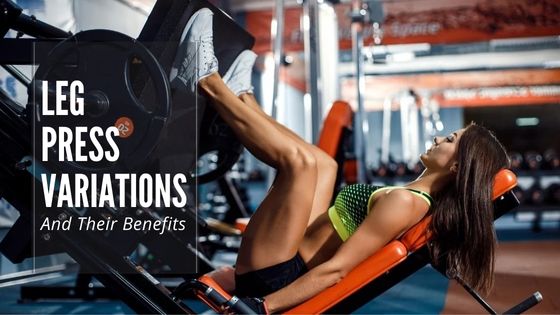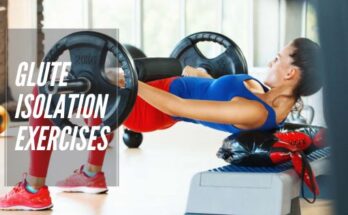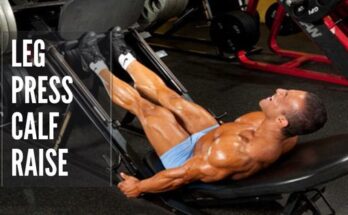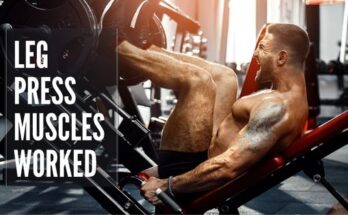The leg press machine is great gym equipment for building strength and hypertrophy in your legs. If squatting is the best for developing legs, then leg press would be the second best. And like different types of squats, there are several leg press variations too.
Due to these variations leg press is one of my favorite exercises in the gym. In fact, I recommend leg press and its variations to my clients too as per their requirements. So let’s talk about these variations and their benefits in detail.
Leg Press Variations
There are mainly 5 leg press variations on the basis of foot placement by which you can transfer the load on different muscle groups of your lower body. By using these variations smartly in your workout, you can train all the major muscles of your lower body.
The thing is that different foot placements affect your muscles differently. By manipulating your foot placement, you can share the load among your quads, glutes, and hamstrings.
Let’s look at them one by one.
1. Standard Foot Placement
This is the standard way to do a leg press in which you put your foot hip-width apart and at the middle of the platform. As a beginner, you should start with this position only.
Standard foot placement gives you the overall development of your legs. It targets all the major muscles (quads, hamstrings, and glutes) of your lower body.
If you wanna go for overall leg development or you are a beginner, then go for standard foot placement.
Read more: Leg Press Muscles Worked
2. Wide Foot Placement
In this variation, your foot remains wider than the standard stance. Put your foot slightly wider than shoulder-width and in the middle of the platform.
This variation gives more emphasis on your adductors. These are the muscles in the inner part of your thighs (inner quads and inner hamstrings).
This position is similar to that of a sumo squat with a wider foot stance and toes slightly outwards. Hence, it hits a similar part of your legs as a sumo squat does.
Wide foot placement works predominantly on your adductors and inner thigs.
3. Narrow Foot Placement
A wider stance trains your adductors which helps in bringing your legs inward. The narrow stance focuses on abductors, which work exactly opposite of the adductors.
Abductors muscles located on your outer thighs help in moving your legs away. For balancing the strength of your inner and outer thighs, you need to train these abductors.
Put your feet less than the hip-width and in the middle of the platform with your toes pointing slightly outwards. This leg press variation is a bit difficult to control, hence, avoid this if you are a complete beginner.
Narrow foot placement works on your abductors (other thigh muscles).
4. High Foot Placement
Till now we are manipulating the distance between the feet. Now it’s time to explore the up and down positions of feet on the platform.
Put your feet hip-width apart (as in standard foot placement) but on the top of the platform. This high placement of feet increases the engagement of the hamstring and glutes.
This leg press variation is very helpful when you have lower back pain and you can’t do Romanian deadlifts as it transfers the load to your hamstrings and glutes.
High foot placement gives more emphasis to your hamstrings and glutes.
5. Low Foot Placement
As a higher stance increases the engagement of hamstrings and glutes, a lower stance does more focus on your quads. So if your primary goal is to develop bigger and stronger quads then this variation is very helpful for you.
Keep your feet hip-width apart but this time, on the lower portion of the platform. This increases the range of motion of the knees, so avoid this variation if you have knee pain.
Try this variation if your primary goal is to build quads.
Some other Leg Press Variations
These variations of leg press were based on the foot placement on the platform. Apart from them, there are some other ways too by which you can get some more benefits from the leg press machine.
Partial Reps
Partial rep is something in which you don’t go for a full range of motion. You just push or pull the weight partially that’s why these are called partial reps. This increases muscle hypertrophy by giving a different stimulus to your muscles.
After finishing the desired number of reps, say 12 reps, your muscles might feel burned out but they still have some energy. Partial reps are a great way to utilize that extra bank of energy in your muscles and to give an edge in your training.
How to use partial reps in leg press?
Firstly, perform leg press with any type of variation you want for any number of reps(10,15,20, etc). Then after finishing the desired number of reps, immediately do some partial reps.
Push the platform away to the top as usual, but while going down, stop midway and push it again to the top. This range of motion is easier hence you can notch out some more reps after finishing your normal reps.
One Leg At A Time
This is a major benefit of leg press. Unlike squats and deadlifts, this exercise gives you the luxury to train one leg at a time. The whole form and technique are the same, but this time, just with a single leg.
Why should you do this?
Most people have a dominant limb that takes more load in any exercise and the other one becomes weaker over a long time. This creates muscle imbalance which also increases your chance of injury.
To remove this imbalance in your lower body, you can give one or two sets extra to your weaker leg until you develop equal strength in both legs.
Leg Press Calf Raise
This is another variation of leg press by which you can train your calf muscles. Leg press calf raise is a great exercise to build the strength and size of your calves.
Put the upper half of your feet (toe region) on the lowest part of the platform such that your heels are off the floor. Fully extend your legs and push the platform just with your toes.
Integrating Leg Press Variations In Your Workout
The leg press is a very dynamic machine. As you have seen, there are a lot of variations of leg press. Now the question is how should you integrate them into your workout.
Well, it’s not that difficult and there is no fixed rule to follow. The important thing for continuous growth is to give different stimuli to your muscles.
As your muscles become used to a particular variation, they stop giving results to that. So you just need to juggle your leg press among these variations.
Like if you are doing standard leg press for a long time, start doing wide stance for some weeks. Then you can switch to a narrow stance for some time. There’s no hard and fast rule.
If you have any weaker sections in your legs you can do that particular variation to target that part only.
| Weaker Part | Foot Placement |
|---|---|
| Quads | Low |
| Glutes | High |
| Hamstrings | High |
| Adductors (Inner thigh) | Wide |
| Abductors (Outer thigh) | Narrow |
Leg Press Variations: SUMMARY
This was a detailed article explaining leg press variations on the basis of foot placement. Different foot stances target different muscles and have different benefits.
I recommend you try all these variations and see the difference yourself. Scrambling among these variations would help you give a complete and balanced development of your legs.
In addition to different foot stances, you can use this machine to train your calves too. As you can train one leg at a time, you can also remove muscle imbalance by giving some extra sets to your weaker leg.
References:




